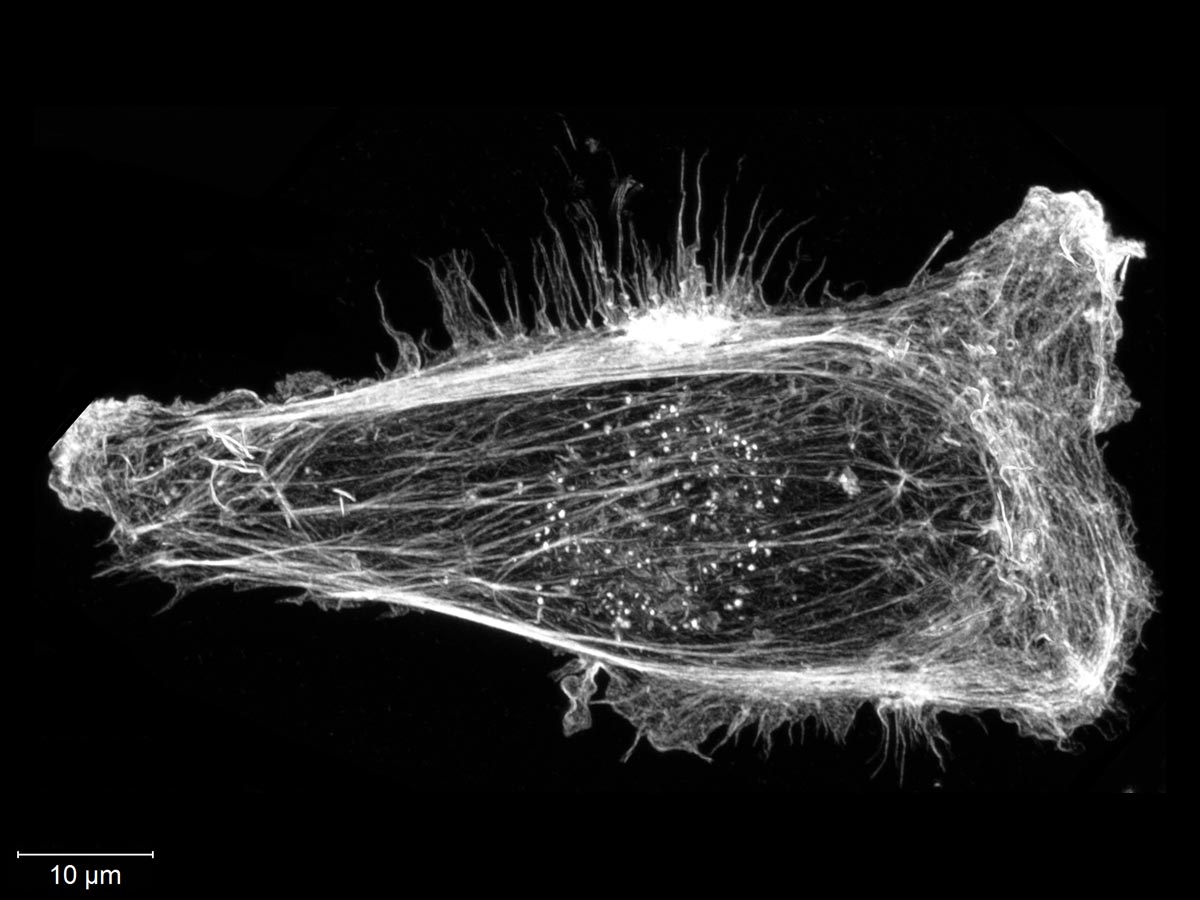New research study furthers understanding of how cells communicate

The actin cytoskeleton of a human breast cancer cell grown in the lab. Professor Michael Olson’s research is furthering understanding of how internal cell communication can trigger modifications to a cell’s cytoskeleton.
A team led by Toronto Metropolitan University (TMU) biology professor Michael Olson has discovered how, in cells, a protein is used as a communication hub between different pathways for chemical signals. This new research furthers our fundamental understanding of cellular biology.
Professor Olson, the Canada Research Chair in Molecular Cell Biology, worked with an international team of researchers from TMU, Cancer Research UK Beatson Institute and the University of Glasgow’s Institute of Cancer Science to investigate MICAL1, a protein that can trigger changes to the shape and movement of cells. Their novel findings about how MICAL1 interacts with a molecule called PAK1 were recently published in the journal Cell Reports.
Through five years of research, the scientists found that MICAL1 serves as a node where this communication takes place. “[This discovery’s] telling us more about the wiring of cells,” said professor Olson. “We know a lot about the pathways, but we don’t always know how they interconnect.”
Their research identified that in kidney and melanoma cells, MICAL1 serves as a node to help two different signalling pathways interact, filling in a knowledge gap about how these pathways communicate. They observed interactions between MICAL1 and PAK1, which controls cell shape. After receiving a signal coming from outside the cell, PAK1 binds to MICAL1, leaving behind phosphate deposits that chemically alter MICAL1. This triggers MICAL1 to become more active and modify the internal cellular structure, or the cytoskeleton, which impacts attributes such as how the cell moves. The regulation of the movement and shape of cells is important for human development and the efficient functioning of processes such as the immune system, Olson explains. In cancer, these pathways that normally regulate those characteristics are altered to help tumours spread around the body.
Professor Olson and his team are also investigating MICAL1’s potential as a cancer drug target. While the findings of this study about MICAL1’s role as a communication node do not necessarily have an immediate application in his cancer research, he notes it is possible they may intersect in the future
Learn more in “MICAL1 activation by PAK1 mediates actin filament disassembly (external link, opens in new window) ” in Cell Reports.
This research was supported by funding from the Canadian Institutes of Health Research, the Natural Sciences and Engineering Research Council of Canada, TMU’s Faculty of Science Dean’s Research Fund, the Canada Research Chairs program and Cancer Research UK institutional funding.